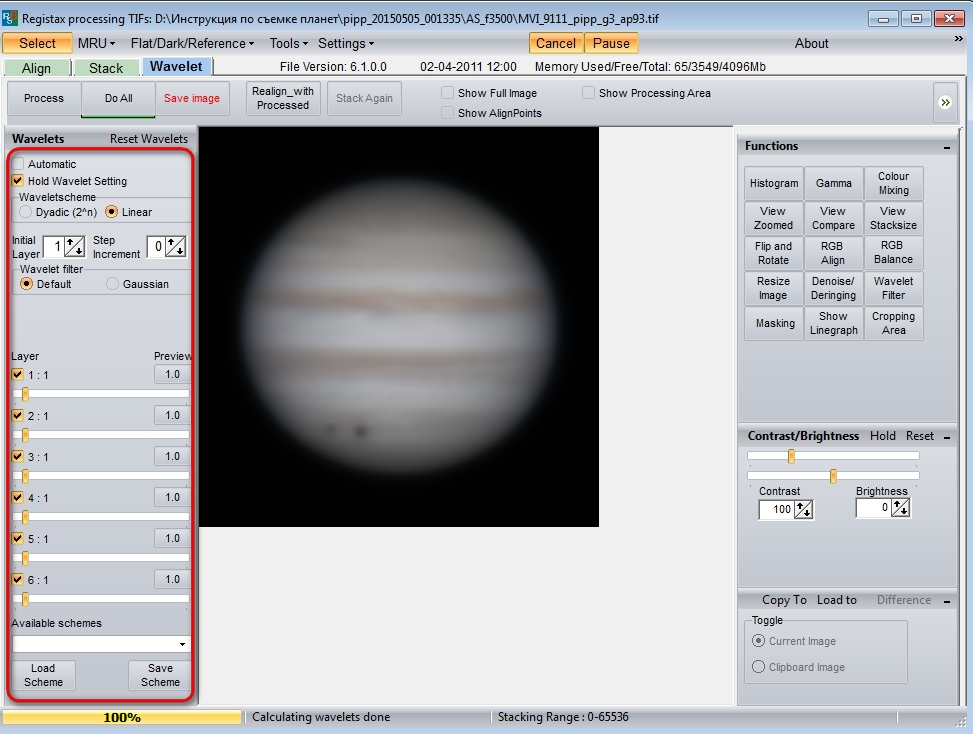

The telescope focal length needs to be increased to give a good size image on the camera chip. Imaging Jupiter with any telescope is a fairly straightforward process. For those starting out a colour camera is recommended as this is by far the easiest way to start getting nice colour images of the planet. Either a colour camera can be used to produce colour images, or one can use a mono camera and use different filters to bring out different details on the Planet. Using such cameras it’s possible to take detailed images even with modest size telescopes. The most popular cameras in use today are the various types of high speed video CCD cameras such as those from ASI, though excellent lower cost alternatives are available such as the Phillips Toucam and SPC900 which can be obtained second hand fairly easily for around £50 or so. Small telescopes of 7.5cm (3”) or more should reveal it easily under steady atmospheric conditions, while larger telescope will clearly show its striking deep colour. The famous Great Red Spot is especially prominent this year and displays a deep orange colour – the most deeply coloured it has appeared in many years. Large aperture telescopes can reveal details on these moons, especially Ganymede. With telescopes of 15cm (6”) or more you will notice the different colours they display as well their tiny disks when seeing allows. Even with modest apertures you will clearly see they vary in brightness from each other. With small telescopes it possible to following the major atmospheric features and the planets four bright Galilean moons. Even small amateur telescopes equipped with a webcam can produce valuable imagery. Such images in recent years have allowed the general meteorology of the Jovian atmosphere to be observed in unprecedented detail. Today modern high speed video cameras are providing us with views of Jupiter in such extraordinary detail, that the finest amateur imagery made today approaches that taken by the world’s largest mountain-top observatories. It comes to opposition on May 9th 2018 and will be visible throughout the night shining brilliantly at magnitude -2.4. Only then should you try slider 1 - often this will not actually produce any great enhancement after all the other sliders have done their job - often you don't need to do anything with slider 1.Jupiter is once again in prime viewing position this month, and this presents an ideal opportunity to try your hand at photographing the solar system’s largest planet. Then slider 5, slider 3 and finally slider 4 (plus their associated denoise boxes - 0.15 should be enough for all of these).

Then repeat the process with slider 2 and its denoise box (Again the one above the slider - You may need to increase the denoise to 0.3 or maybe a little more).

You should increase this until all the noise you just produced with the slider disappears! A value of 0.1 or 0.15 should do. Then use the up arrow to increase the value in the denoise box (the one above slider 6). Start with slider 6 and move it about until you find the optimum position - ignoring any noise artifacts that this generates (this comes with practice!) For Registax 6 I have found that this scheme works quite well (there is no perfect scheme - you just have to play!):


 0 kommentar(er)
0 kommentar(er)
